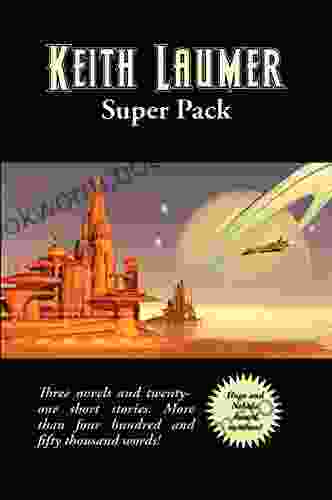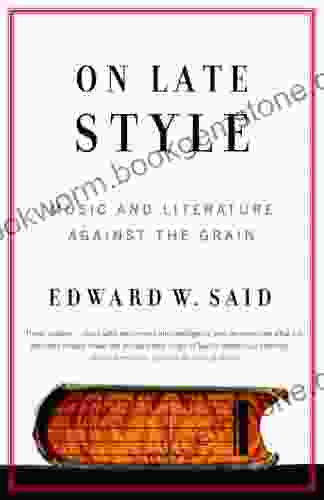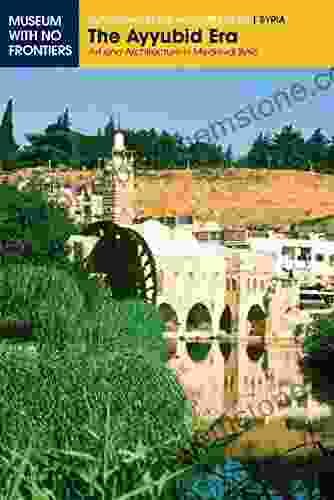The Ayyubid Era Art and Architecture in Medieval Syria: Islamic Art in the Middle Ages

The Ayyubid era was a period of great artistic and architectural achievement in medieval Syria. The Ayyubids, a Kurdish dynasty founded by Salah al-Din Yusuf ibn Ayyub, ruled Syria from 1174 to 1260. During this time, they oversaw the construction of numerous mosques, madrasas (Islamic schools),and other religious and secular buildings.
Ayyubid art and architecture was heavily influenced by the earlier Seljuk and Fatimid periods. However, the Ayyubids also developed their own unique style, characterized by its elegance, simplicity, and use of geometric and floral motifs.
4 out of 5
| Language | : | English |
| File size | : | 55588 KB |
| Text-to-Speech | : | Enabled |
| Screen Reader | : | Supported |
| Enhanced typesetting | : | Enabled |
| Print length | : | 288 pages |
**Ayyubid Architecture**
One of the most striking features of Ayyubid architecture is its use of pointed arches. Pointed arches were first used in Islamic architecture in the 12th century, and they became increasingly popular during the Ayyubid period. Pointed arches are stronger and more stable than round arches, and they can be used to create taller and more spacious buildings.
Another characteristic feature of Ayyubid architecture is the use of iwans. Iwans are vaulted halls that are open on one side. They are often used as entrances to mosques or other public buildings. Iwans can also be used to create a sense of space and grandeur.
Some of the most famous examples of Ayyubid architecture include the Great Mosque of Damascus, the Citadel of Aleppo, and the Krak des Chevaliers. The Great Mosque of Damascus is one of the oldest and most important mosques in the world. It was originally built in the 8th century, but it was expanded and renovated by the Ayyubids in the 12th and 13th centuries. The mosque is famous for its beautiful courtyard, its intricate mosaics, and its towering minarets.
The Citadel of Aleppo is a large and imposing fortress that was built by the Ayyubids in the 12th century. The citadel is located on a hill overlooking the city of Aleppo. It was used as a military stronghold and a royal residence. The citadel is a UNESCO World Heritage Site.
The Krak des Chevaliers is a crusader castle that was built by the Hospitaller Knights in the 12th century. The castle was later captured by the Ayyubids, and it became one of their most important strongholds. The castle is a UNESCO World Heritage Site.
**Ayyubid Art**
Ayyubid art was also heavily influenced by the earlier Seljuk and Fatimid periods. However, the Ayyubids also developed their own unique style, characterized by its elegance, simplicity, and use of geometric and floral motifs.
Some of the most common motifs used in Ayyubid art include stars, circles, squares, and triangles. These motifs were often combined to create complex and beautiful designs. Ayyubid artists also made extensive use of calligraphy. Calligraphy is the art of writing beautifully. It was often used to decorate mosques, madrasas, and other public buildings.
Some of the most famous examples of Ayyubid art include the Aleppo Codex, the Damascus Casket, and the Mosul Vase. The Aleppo Codex is a manuscript that was written in the 12th century. It is famous for its beautiful illustrations and its elegant calligraphy. The Damascus Casket is a small wooden box that was made in the 13th century. It is decorated with intricate carvings and inlaid with precious stones. The Mosul Vase is a large ceramic vase that was made in the 13th century. It is decorated with a variety of geometric and floral motifs.
**Legacy of Ayyubid Art and Architecture**
The art and architecture of the Ayyubid era had a profound impact on the development of Islamic art and architecture. The Ayyubids' use of pointed arches, iwans, and geometric and floral motifs became standard features of Islamic architecture throughout the Middle East and beyond.
The Ayyubids' art and architecture also had a significant influence on European art. The pointed arch, for example, was adopted by European architects in the 13th century, and it became one of the defining features of Gothic architecture.
The art and architecture of the Ayyubid era is a testament to the creativity and skill of the Ayyubid artists and architects. Their work continues to inspire and amaze people today.
4 out of 5
| Language | : | English |
| File size | : | 55588 KB |
| Text-to-Speech | : | Enabled |
| Screen Reader | : | Supported |
| Enhanced typesetting | : | Enabled |
| Print length | : | 288 pages |
Do you want to contribute by writing guest posts on this blog?
Please contact us and send us a resume of previous articles that you have written.
 Best Book
Best Book Page Flip
Page Flip Bookshelf
Bookshelf Literary loom
Literary loom Chapter
Chapter Bookish
Bookish PageTurner
PageTurner Bibliophile
Bibliophile Story
Story Inkwell
Inkwell Bookworm
Bookworm Labyrinth
Labyrinth Plot Twist
Plot Twist Prose
Prose Paperback
Paperback Storyteller
Storyteller Sanctuary
Sanctuary Fiction
Fiction Reading
Reading Chronicle
Chronicle Read
Read Iain Rob Wright
Iain Rob Wright Margaret Ranger
Margaret Ranger Helen Birch
Helen Birch David Gessner
David Gessner Jean Daive
Jean Daive Vanda Jackson
Vanda Jackson David Roberts
David Roberts Dean Movshovitz
Dean Movshovitz Norman F Cantor
Norman F Cantor Iesha Bree
Iesha Bree George Catlin
George Catlin Marisa Handler
Marisa Handler Stanley Lane Poole
Stanley Lane Poole Lewis F Day
Lewis F Day Enrique Zaldivar
Enrique Zaldivar David Leddick
David Leddick Frank Mccourt
Frank Mccourt Glenn Dixon
Glenn Dixon Shirley Ann Grau
Shirley Ann Grau Dawnn Karen
Dawnn Karen H Terrell Griffin
H Terrell Griffin David Lebovitz
David Lebovitz Jim Harter
Jim Harter Edward W Said
Edward W Said Heather Alexander
Heather Alexander Kathy Arlyn Sokol
Kathy Arlyn Sokol David Hopkins
David Hopkins Tracy Clark
Tracy Clark Donna Everhart
Donna Everhart Mark Zupan
Mark Zupan Wanda Compres
Wanda Compres Thomas Booth
Thomas Booth David Hoffer
David Hoffer K B Wagers
K B Wagers Gustav Stickley
Gustav Stickley Debrah Martin
Debrah Martin Elizabeth M Bonker
Elizabeth M Bonker William Henry Jackson
William Henry Jackson Diego Rica
Diego Rica Tilar J Mazzeo
Tilar J Mazzeo Diane Alber
Diane Alber Stuart Macdonald
Stuart Macdonald Meghan March
Meghan March Terry Pratchett
Terry Pratchett Jenifer Lewis
Jenifer Lewis Orson Scott Card
Orson Scott Card David Shimwell
David Shimwell Marie Rochelle
Marie Rochelle Joynell Schultz
Joynell Schultz Larry Miller
Larry Miller James Naremore
James Naremore Julia Hsieh
Julia Hsieh David Hagberg
David Hagberg Pete Hamill
Pete Hamill Delphi Classics
Delphi Classics Susanna Moodie
Susanna Moodie Dawn Emerson
Dawn Emerson William Alan Webb
William Alan Webb V D Bucket
V D Bucket David Canford
David Canford Robert B Parker
Robert B Parker Kembrew Mcleod
Kembrew Mcleod Dave Watson
Dave Watson Jahquel J
Jahquel J David Stevens
David Stevens Marion Mcnealy
Marion Mcnealy Mako
Mako Melinda Buckwalter
Melinda Buckwalter Gulwali Passarlay
Gulwali Passarlay David Plumbley
David Plumbley Denise Kahn
Denise Kahn Darren Craig
Darren Craig Natascha Carrel
Natascha Carrel Marra B Gad
Marra B Gad Thomas Nast
Thomas Nast Lara Lee
Lara Lee Christopher Panaretos
Christopher Panaretos Vanessa Miller
Vanessa Miller Emilio Estefan
Emilio Estefan Fredric Jameson
Fredric Jameson Ivan Doig
Ivan Doig Jocelyn Nicole Johnson
Jocelyn Nicole Johnson Daniel Suarez
Daniel Suarez Jeffrey Tayler
Jeffrey Tayler Gavin Larsen
Gavin Larsen Rick Goldschmidt
Rick Goldschmidt Raven Rivers
Raven Rivers Liz Marsham
Liz Marsham Bob Martin
Bob Martin Dervla Murphy
Dervla Murphy Lisa Allen Agostini
Lisa Allen Agostini Moritz Fink
Moritz Fink Emily Owen
Emily Owen Tania Romanov
Tania Romanov Vicki Rozema
Vicki Rozema Ruth Superhal
Ruth Superhal G J Ogden
G J Ogden Patrick Bixby
Patrick Bixby Jodi Bombardier
Jodi Bombardier Carlos Francisco Jackson
Carlos Francisco Jackson David Ritz
David Ritz Scotto Moore
Scotto Moore Jerry Boyd
Jerry Boyd Jim Downing
Jim Downing Laura Rascaroli
Laura Rascaroli John Mcmanus
John Mcmanus David Long
David Long Robert Jordan
Robert Jordan Niraj Gupta
Niraj Gupta Mary G Houston
Mary G Houston Eric Lomax
Eric Lomax Daniel Arenson
Daniel Arenson Bob Leszczak
Bob Leszczak Lara Dawson
Lara Dawson Dominique Mondesir
Dominique Mondesir Ray Oslow
Ray Oslow Manohla Dargis
Manohla Dargis Ian St Martin
Ian St Martin Lisa Congdon
Lisa Congdon Daniel Pennac
Daniel Pennac Rob Mendez
Rob Mendez Kim Stanley Robinson
Kim Stanley Robinson Spider Robinson
Spider Robinson Joy Deja King
Joy Deja King Deborah Feldman
Deborah Feldman Ilona Andrews
Ilona Andrews Jack Vance
Jack Vance Stephanie Hemelryk Donald
Stephanie Hemelryk Donald David Railton
David Railton David Thomas
David Thomas Wolfgang Ziegler
Wolfgang Ziegler David Greenberg
David Greenberg David Leite
David Leite R P Jones
R P Jones Gloria Anzaldua
Gloria Anzaldua Peggy Guggenheim
Peggy Guggenheim Peter Aleshire
Peter Aleshire Jeffrey Round
Jeffrey Round Joseph M Mascia
Joseph M Mascia Mia Mckenzie
Mia Mckenzie Russ Roberts
Russ Roberts Danika Stone
Danika Stone Ivan Margolius
Ivan Margolius Potter Style
Potter Style Walt Browning
Walt Browning Dr Lew Deitch
Dr Lew Deitch Michael J Sullivan
Michael J Sullivan David Lundberg
David Lundberg Nathan Van Coops
Nathan Van Coops Mary Stewart
Mary Stewart Daniel Okrent
Daniel Okrent John Richardson
John Richardson William J Conaway
William J Conaway Elizabeth Gilpin
Elizabeth Gilpin Rose Marie Beebe
Rose Marie Beebe David Kerr
David Kerr Gayne C Young
Gayne C Young Sarah Waters
Sarah Waters Mimi Matthews
Mimi Matthews Tina Dreffin
Tina Dreffin Daniel Black
Daniel Black Kyle West
Kyle West Peter Millar
Peter Millar Jody Eddy
Jody Eddy Eric Knowles
Eric Knowles K Alex Walker
K Alex Walker Jim Richards
Jim Richards Ginny Dye
Ginny Dye James Lee Burke
James Lee Burke Mark Mazower
Mark Mazower David Petrie
David Petrie Michal Ramsey Smith
Michal Ramsey Smith Rosario Marin
Rosario Marin Laquette
Laquette Katrien Van Der Schueren
Katrien Van Der Schueren Daniella Dechristopher
Daniella Dechristopher Wilson Bickford
Wilson Bickford Kenneth Brantingham
Kenneth Brantingham Gerald Clark
Gerald Clark Daniel Zaragoza
Daniel Zaragoza Howard Fast
Howard Fast Ludovic Castro
Ludovic Castro Brendan Keogh
Brendan Keogh Steve Erickson
Steve Erickson Veronica Toumanova
Veronica Toumanova Jiedson Domigpe
Jiedson Domigpe Graham Swift
Graham Swift David Baldacci
David Baldacci Judy Batalion
Judy Batalion Patty Brown
Patty Brown Marques Vickers
Marques Vickers Regina Kanyu Wang
Regina Kanyu Wang Pete Wilton
Pete Wilton International Learning Academy
International Learning Academy Eve Laplante
Eve Laplante Quanna Lashae
Quanna Lashae Elizabeth F Heath
Elizabeth F Heath Daniel Schinhofen
Daniel Schinhofen David W Cameron
David W Cameron Troy Anthony Platt
Troy Anthony Platt Matt Brown
Matt Brown Jonathan Nicholas
Jonathan Nicholas Peter Ackroyd
Peter Ackroyd Ken Britz
Ken Britz Don Keith
Don Keith Hester Berry
Hester Berry David Bellamy
David Bellamy Vivian Chong
Vivian Chong Crystal Allen
Crystal Allen Gene Deitch
Gene Deitch Thorkild Hansen
Thorkild Hansen Steve Russell
Steve Russell Jennifer Julie Miller
Jennifer Julie Miller Lise Herzog
Lise Herzog Karen Kaufman Wilson
Karen Kaufman Wilson Denise Bosler
Denise Bosler Joy Spanabel Emery
Joy Spanabel Emery William Feaver
William Feaver Warren Berger
Warren Berger Lisa M Rose
Lisa M Rose Reese Ryan
Reese Ryan Jamer Hunt
Jamer Hunt Eneasz Brodski
Eneasz Brodski Nicole R Fleetwood
Nicole R Fleetwood Jim Butcher
Jim Butcher Simon R Green
Simon R Green Patrice Fitzgerald
Patrice Fitzgerald Jonathan Dehart
Jonathan Dehart Delayed Gratification
Delayed Gratification Wes Singletary
Wes Singletary Edward Butts
Edward Butts Keith Mcdonald
Keith Mcdonald Joni Eareckson Tada
Joni Eareckson Tada Steve Roberts
Steve Roberts Wassily Kandinsky
Wassily Kandinsky David Mack
David Mack J L Williams
J L Williams Tullio Kezich
Tullio Kezich M H Johnson
M H Johnson Jemma Westbrook
Jemma Westbrook Glenn Kardy
Glenn Kardy Laura Kasinof
Laura Kasinof Karen Traviss
Karen Traviss Patrick Drazen
Patrick Drazen Marcos Enrique Ruiz Rivero Ii Aviel
Marcos Enrique Ruiz Rivero Ii Aviel Fang Fang
Fang Fang Davey Johnson
Davey Johnson Debra Bricker Balken
Debra Bricker Balken Michael Schumacher
Michael Schumacher Tim Leong
Tim Leong Misty Copeland
Misty Copeland Daniel M Bensen
Daniel M Bensen Loretta Lynn
Loretta Lynn Bob Dow
Bob Dow David Riley
David Riley Daryl Lane
Daryl Lane Ira Heinichen
Ira Heinichen David Tracey
David Tracey Kitty Pilgrim
Kitty Pilgrim Richard Antoine White
Richard Antoine White Gilda Williams
Gilda Williams Shelley Hitz
Shelley Hitz Robert Beer
Robert Beer Edwidge Danticat
Edwidge Danticat David Schwartz
David Schwartz David Hallberg
David Hallberg Klaus Carl
Klaus Carl David Beers
David Beers Stefano Mancuso
Stefano Mancuso David Codamo
David Codamo David Menconi
David Menconi Mark Hillary
Mark Hillary G S Jennsen
G S Jennsen Ira Block
Ira Block Robbie Sheerin
Robbie Sheerin Sarah Jane Cervenak
Sarah Jane Cervenak Paul Talbot Greaves
Paul Talbot Greaves Simon Callow
Simon Callow Daniel Ritchie
Daniel Ritchie Kenneth Clark
Kenneth Clark David Horgan
David Horgan David Conyers
David Conyers Robin Esrock
Robin Esrock Deirdre Slattery
Deirdre Slattery David Blaine
David Blaine Peter Lovatt
Peter Lovatt Dru Pagliassotti
Dru Pagliassotti Roy Simmons
Roy Simmons Liz Harper
Liz Harper Gretel Ehrlich
Gretel Ehrlich Edward Brody
Edward Brody David Mura
David Mura Gayatri Gopinath
Gayatri Gopinath Daniel Dae Kim
Daniel Dae Kim Timothy Ellis
Timothy Ellis S W Erdnase
S W Erdnase Eric Thomson
Eric Thomson Danny Peary
Danny Peary David Tuffley
David Tuffley Drew Pritchard
Drew Pritchard Darren Arnold
Darren Arnold Nathan Johnson
Nathan Johnson Rosie Martin
Rosie Martin Ryukyu Saito
Ryukyu Saito Robert Barlas
Robert Barlas Daniel Gibbs
Daniel Gibbs Martha Wells
Martha Wells Juliet Defore
Juliet Defore Madelynn Dickerson
Madelynn Dickerson Daniel Gross
Daniel Gross Mike Puma
Mike Puma Janet Kagan
Janet Kagan Maryse Conde
Maryse Conde David B Levy
David B Levy Veronique Blanchard
Veronique Blanchard Sue Roe
Sue Roe Morgan Jerkins
Morgan Jerkins Miles J Unger
Miles J Unger Rosanna Ley
Rosanna Ley Thomas Sowell
Thomas Sowell David Coggins
David Coggins Lucy Ryder Richardson
Lucy Ryder Richardson Rachel Howzell Hall
Rachel Howzell Hall David Murphy
David Murphy Mary Strong
Mary Strong Steven Watts
Steven Watts Jessica Swale
Jessica Swale Rich Cohen
Rich Cohen Graham Hutchins
Graham Hutchins Darby Penney
Darby Penney David Bennun
David Bennun Darren Waldron
Darren Waldron Lee J Ames
Lee J Ames Gary Greene
Gary Greene Danielle Kroll
Danielle Kroll Dave Tucker
Dave Tucker Lynnea Lee
Lynnea Lee Lev Grossman
Lev Grossman David Koenig
David Koenig Michael Bamberger
Michael Bamberger Darktechnomancer
Darktechnomancer David Langlieb
David Langlieb Darryl Anka
Darryl Anka R Neil Hewison
R Neil Hewison Stella Blum
Stella Blum Martha R Severens
Martha R Severens James Cook
James Cook Lewis Carroll
Lewis Carroll Gail Anderson
Gail Anderson Jayne Castle
Jayne Castle David Goudsward
David Goudsward Nick Steverson
Nick Steverson Darwyn Cooke
Darwyn Cooke Dawn G Marsh
Dawn G Marsh Bill Richardson
Bill Richardson Nathan Hystad
Nathan Hystad James Ellroy
James Ellroy J A Jance
J A Jance Preston Grassmann
Preston Grassmann Danyel Smith
Danyel Smith Stella Suberman
Stella Suberman Tanisha Stewart
Tanisha Stewart Thomas Kearney
Thomas Kearney David Deutschmann
David Deutschmann Keitra Crooks
Keitra Crooks Silas Munro
Silas Munro Robert Sitton
Robert Sitton Danielle Martin
Danielle Martin Ann Cleeves
Ann Cleeves Debby Detering
Debby Detering Jacqueline Winspear
Jacqueline Winspear William Dalrymple
William Dalrymple Sonia Choquette
Sonia Choquette Lauren Markham
Lauren Markham Gaston Dorren
Gaston Dorren Lina Rather
Lina Rather Thi Bui
Thi Bui Darren Naish
Darren Naish Sylvia Plath
Sylvia Plath Stephen Arseneault
Stephen Arseneault Richard Kurin
Richard Kurin Liron Yanconsky
Liron Yanconsky Tim Hodkinson
Tim Hodkinson Kirill Klevanski
Kirill Klevanski Deborah Solomon
Deborah Solomon George Morton Jack
George Morton Jack Trip Stevens
Trip Stevens Margot Mifflin
Margot Mifflin Lisa Smith
Lisa Smith Reni K Amayo
Reni K Amayo Thorstein Veblen
Thorstein Veblen University Press
University Press Susan Stoker
Susan Stoker David Simpson
David Simpson Ruth Leaf
Ruth Leaf Franziska Thomas
Franziska Thomas John Graves
John Graves Robert Rodriguez
Robert Rodriguez Karl F Cohen
Karl F Cohen The Expat Homes Team
The Expat Homes Team David A Badillo
David A Badillo David Ellsworth
David Ellsworth David J Schmidt
David J Schmidt Dartanya A Williams Sr
Dartanya A Williams Sr Diane Chamberlain
Diane Chamberlain David Hornung
David Hornung Janet Mock
Janet Mock Tom Clancy
Tom Clancy Bill Gardner
Bill Gardner Stephanie Pui Mun Law
Stephanie Pui Mun Law Jennifer Dasal
Jennifer Dasal Jo Toye
Jo Toye Keith Laumer
Keith Laumer Rafael Ocasio
Rafael Ocasio Mike Farris
Mike Farris David Sherwin
David Sherwin Jesse Bryant Wilder
Jesse Bryant Wilder Tj Reynolds
Tj Reynolds Trisha R Thomas
Trisha R Thomas Ian Fleming
Ian Fleming Janet Anderson
Janet Anderson E M Hardy
E M Hardy Nanchu
Nanchu Daniel Hardie
Daniel Hardie Ignacio J Esteban
Ignacio J Esteban William Least Heat Moon
William Least Heat Moon Naima Simone
Naima Simone David Weber
David Weber Danielle Allen
Danielle Allen Scott Ryan
Scott Ryan Tory Bilski
Tory Bilski Tom Spector
Tom Spector Henry Evans
Henry Evans Roderick Beaton
Roderick Beaton Leonard S Marcus
Leonard S Marcus Thor Hanson
Thor Hanson Dean Koontz
Dean Koontz Tracey English
Tracey English Fx Holden
Fx Holden Dorothy Dent
Dorothy Dent Harry Bernstein
Harry Bernstein Frederick Law Olmsted
Frederick Law Olmsted E B Hudspeth
E B Hudspeth Josh Karp
Josh Karp Tony White
Tony White Erica A Davis
Erica A Davis Victor Zugg
Victor Zugg Josh Reynolds
Josh Reynolds Cornelius C Kubler
Cornelius C Kubler Dartagnan
Dartagnan Dawn C Crouch
Dawn C Crouch Ross Buzzell
Ross Buzzell Nicole Kornher Stace
Nicole Kornher Stace Stanley Vestal
Stanley Vestal John Samuel Barnett
John Samuel Barnett David Britland
David Britland Robert Arp
Robert Arp Henry K Miller
Henry K Miller David Margolick
David Margolick Jeffrey Weiss
Jeffrey Weiss Stephen Coonts
Stephen Coonts Deborah Tannen
Deborah Tannen David Brin
David Brin Steve Hulett
Steve Hulett Daniel Ankele
Daniel Ankele Sasha Chapin
Sasha Chapin Virginia Melville Cowart
Virginia Melville Cowart Jack Hartnell
Jack Hartnell Daria Gabryanczyk
Daria Gabryanczyk David Byrne
David Byrne Mark Willenbrink
Mark Willenbrink Mark Arnold
Mark Arnold Vivienne Cawson
Vivienne Cawson Jim Krause
Jim Krause Paul Bonnet
Paul Bonnet Michael Robertson
Michael Robertson Ryan Hendrickson
Ryan Hendrickson Linda Leaming
Linda Leaming Pam Flowers
Pam Flowers David Downie
David Downie Karena Dawn
Karena Dawn Stu Glauberman
Stu Glauberman Rosemary Agonito
Rosemary Agonito Dean Dalton
Dean Dalton Jack Reid
Jack Reid Denise Essex
Denise Essex Jonathan Fenby
Jonathan Fenby Greg Dragon
Greg Dragon Jerzy Kosinski
Jerzy Kosinski J G Heck
J G Heck Denise Bossarte
Denise Bossarte Robert L Wise
Robert L Wise Edmond De Goncourt
Edmond De Goncourt Bill Rumpel
Bill Rumpel Lily King
Lily King West Fraser
West Fraser Jeffrey Scott
Jeffrey Scott Kimberly Wilkes
Kimberly Wilkes Pen Quiller
Pen Quiller J T R Brown
J T R Brown Sia N Evans
Sia N Evans Honey Phillips
Honey Phillips Robert Appel
Robert Appel Ron Wiggins
Ron Wiggins Zoe Ingram
Zoe Ingram Heidi W Durrow
Heidi W Durrow William Morris
William Morris Euromentravel Com
Euromentravel Com Lester Meachem
Lester Meachem Rick Griffin
Rick Griffin Lolah Lace
Lolah Lace Darrel Rees
Darrel Rees Sarfraz Manzoor
Sarfraz Manzoor Danny White
Danny White John Rae
John Rae Tulku Urgyen Rinpoche
Tulku Urgyen Rinpoche Mitch Weiss
Mitch Weiss Mary Jane Jacob
Mary Jane Jacob Martin Turner
Martin Turner Rachel Mintz
Rachel Mintz Mike Doyle
Mike Doyle George L Wybenga
George L Wybenga E Lucas Bridges
E Lucas Bridges David Hughes
David Hughes Sister Souljah
Sister Souljah Rick Stein
Rick Stein Thomas Pecore Weso
Thomas Pecore Weso David F Walker
David F Walker Joseph Abboud
Joseph Abboud Jung Chang
Jung Chang Darren Mooney
Darren Mooney David Salle
David Salle P W Jordan
P W Jordan Daniel Pierce
Daniel Pierce Susana Martinez Conde
Susana Martinez Conde Posey Parks
Posey Parks Kim Cash Tate
Kim Cash Tate Mark Mccrum
Mark Mccrum James Mcbride
James Mcbride Frank Gado
Frank Gado Daniel Silva
Daniel Silva Lawrence Hill
Lawrence Hill David A Goodman
David A Goodman Jason Thomas
Jason Thomas Daniel Bellon
Daniel Bellon Yossi Klein Halevi
Yossi Klein Halevi Richard Brody
Richard Brody David James
David James Darius Hinks
Darius Hinks Donald Hoffmann
Donald Hoffmann David Aston
David Aston Ernest Shackleton
Ernest Shackleton Tim Clissold
Tim Clissold Robbie Robertson
Robbie Robertson Richard Wagamese
Richard Wagamese Marilyn Monroe
Marilyn Monroe Jan De Volder
Jan De Volder Dzongsar Jamyang Khyentse
Dzongsar Jamyang Khyentse Linda J Tomko
Linda J Tomko Dave White
Dave White Sue Monk Kidd
Sue Monk Kidd Lynn Vincent
Lynn Vincent Lawrence Baldassaro
Lawrence Baldassaro Gregory Allanther
Gregory Allanther Ray Bradbury
Ray Bradbury Bryan Bishop
Bryan Bishop Nancy Uno
Nancy Uno Erin Morgenstern
Erin Morgenstern Paul Schrader
Paul Schrader Laxuri Art
Laxuri Art Wesley Chu
Wesley Chu Virginia Matheson Hooker
Virginia Matheson Hooker Judith Kerr
Judith Kerr Roxie Mcclaine
Roxie Mcclaine Kushanava Choudhury
Kushanava Choudhury Donna Tartt
Donna Tartt Denise J Howard
Denise J Howard Dave Rearwin
Dave Rearwin Maxine Hong Kingston
Maxine Hong Kingston Lillian Colon
Lillian Colon
Light bulbAdvertise smarter! Our strategic ad space ensures maximum exposure. Reserve your spot today!

 Chance FosterKeith Laumer Super Pack: An Intergalactic Adventure in Positronic Super Pack...
Chance FosterKeith Laumer Super Pack: An Intergalactic Adventure in Positronic Super Pack... Dennis HayesFollow ·19.2k
Dennis HayesFollow ·19.2k Stuart BlairFollow ·9.3k
Stuart BlairFollow ·9.3k Chris ColemanFollow ·13.5k
Chris ColemanFollow ·13.5k Jayson PowellFollow ·9.8k
Jayson PowellFollow ·9.8k Charlie ScottFollow ·17.5k
Charlie ScottFollow ·17.5k Fyodor DostoevskyFollow ·2.9k
Fyodor DostoevskyFollow ·2.9k John UpdikeFollow ·11.5k
John UpdikeFollow ·11.5k Easton PowellFollow ·6.4k
Easton PowellFollow ·6.4k

 Roland Hayes
Roland HayesWe Were 12 At 12:12 On 12/12/12: Adventure Travel Tales
On December 12, 2012, at...

 Corey Green
Corey GreenUnveiling Adventure and Ecotourism in Edward James'...
Nestled amidst the lush...

 Douglas Foster
Douglas FosterBerkeley Artisan Food Markets: A Culinary Adventure in...
Nestled amidst...

 Dan Henderson
Dan HendersonThanksgiving in 24 Hours: Travel Tales to Inspire Your...
Thanksgiving is a time for family, friends,...

 Reginald Cox
Reginald CoxMusic and Literature Against the Grain: Exploring the...
: The Allure of...
4 out of 5
| Language | : | English |
| File size | : | 55588 KB |
| Text-to-Speech | : | Enabled |
| Screen Reader | : | Supported |
| Enhanced typesetting | : | Enabled |
| Print length | : | 288 pages |












